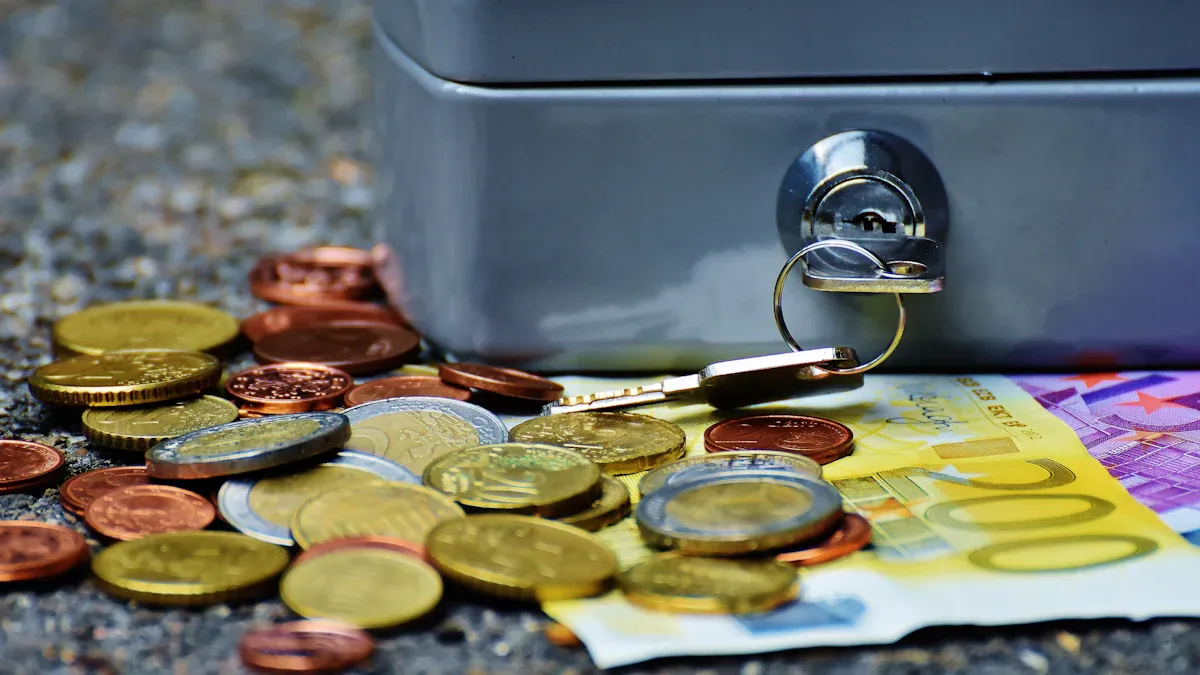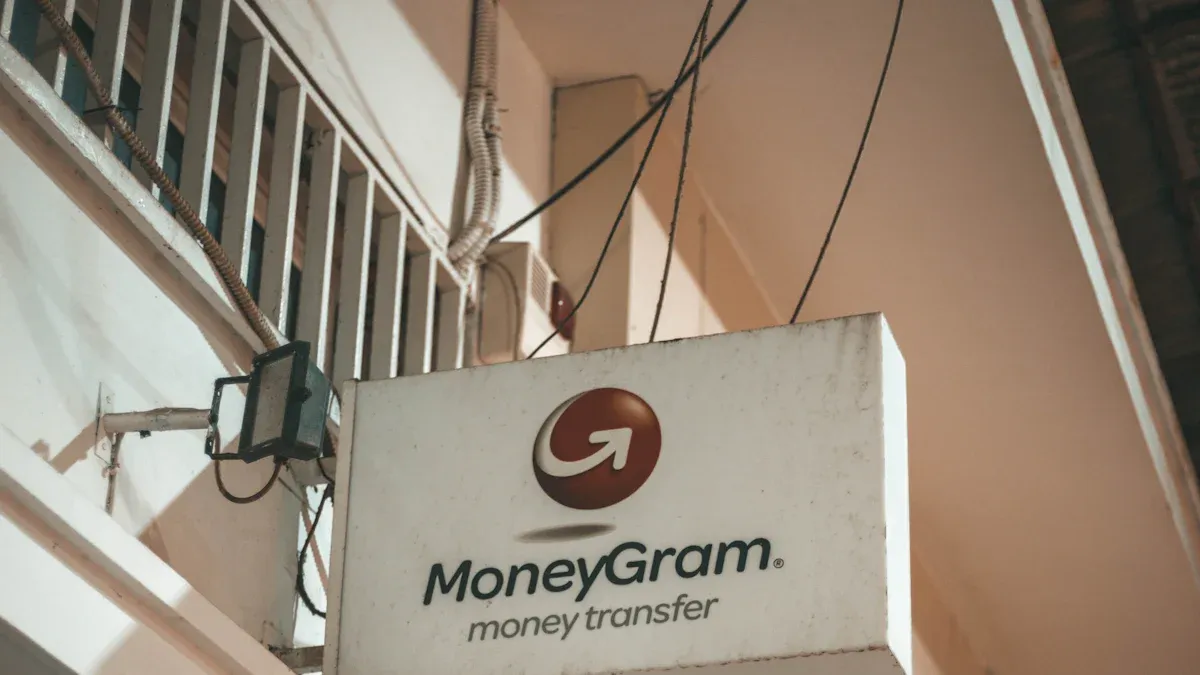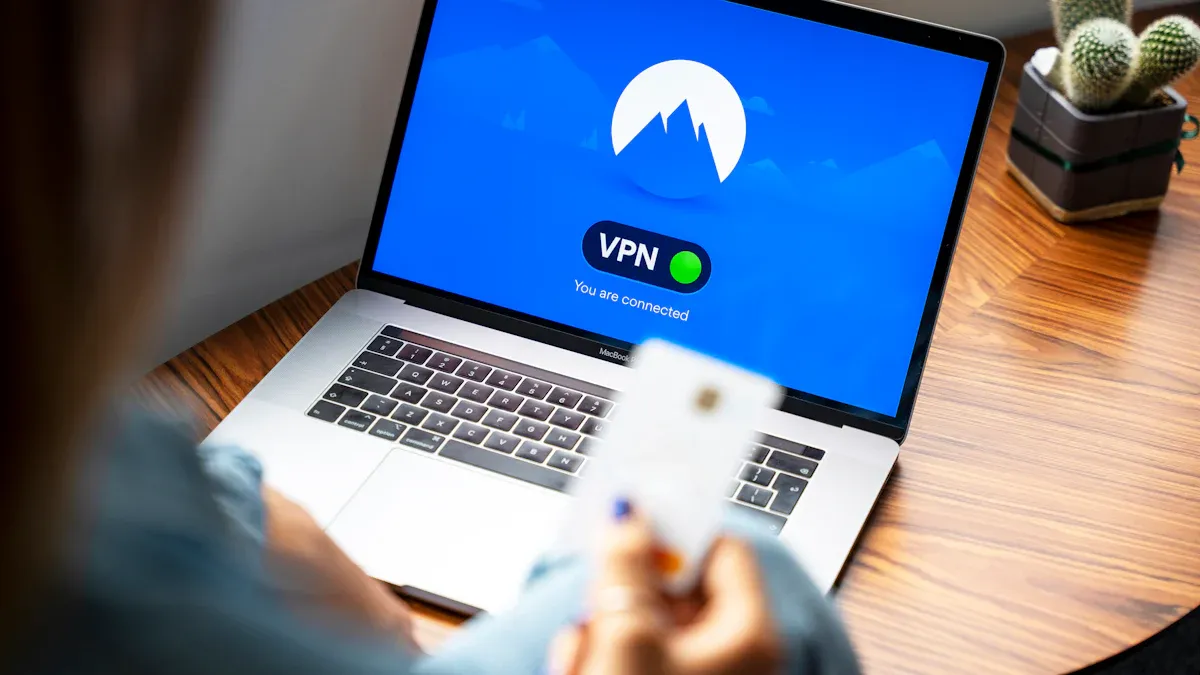- EasyCard
- Trade
- Help
- Announcement
- Academy
- SWIFT Code
- Iban Number
- Referral
- Customer Service
- Blog
- Creator
How to Remit Money to Yourself via MoneyGram and Ensure the Security of Funds

Image Source: pexels
Yes, you can absolutely send money to yourself through MoneyGram. This is a highly practical and secure method when you’re traveling, relocating, or need to transfer cash across different locations. Understanding the correct process is crucial. It helps you complete transfers effortlessly and ensures the safety of your funds.
Key Points
- You can use MoneyGram to send money to yourself. This is useful during travel or relocation.
- When sending money, the recipient’s name must exactly match your ID. Double-check carefully.
- After sending money, you’ll receive an 8-digit reference number. Protect it like cash and don’t share it with anyone.
- To withdraw funds, you need to provide the 8-digit reference number and a valid ID. Both are essential.
- Be cautious of scams. MoneyGram will never ask you to provide your reference number or make urgent transfers.
MoneyGram Self-Transfer Operation Guide

Image Source: unsplash
Wherever you are, MoneyGram offers flexible self-transfer options. You can choose convenient online operations or visit a nearby agent location. Below are detailed step-by-step guides for both methods to help you complete transfers with ease.
Online Transfer: Website and App Steps
Sending money to yourself via the MoneyGram website or mobile app is one of the most efficient methods. You can complete it from the comfort of your home with just a few clicks.
- Register or Log In to Your Account: Visit the MoneyGram website or open the app. If you’re a new user, you’ll need to create an account. You’ll need the following personal information for identity verification:
- Your full name
- Your residential address (not a P.O. box)
- Your phone number
- Date of birth
- A valid government-issued ID
- Select Transfer Destination: On the transfer page, choose the country or region where you plan to receive the funds.
- Enter Transfer Amount: Input the amount you wish to send (e.g., 500 USD). The system will automatically calculate the applicable fees and exchange rate.
- Fill Out Recipient Information: In the Recipient field, accurately enter your own information.
Critical Step: The recipient’s name must exactly match the name on the ID you’ll use to collect the funds.
- Choose Payment Method: You can pay for the transfer using various methods, including:
- Confirm and Complete the Transaction: Carefully review all details, including name, amount, and fees, then submit the transaction.
In-Person Transfer: Agent Location Process
If you prefer or are accustomed to cash transactions, you can visit a MoneyGram agent location.
- Locate an Agent: Use the “Find a Location” tool on the MoneyGram website. Simply enter your city, state, or ZIP code, or use your current location to find nearby agents.
- Prepare Required Documents: Before heading to the agent, ensure you bring:
- A valid ID
- The cash you wish to send, plus additional funds to cover fees
- Fill Out the Transfer Form: At the agent location, complete a form. In the recipient field, enter your full name, ensuring it matches your ID.
- Complete the Transaction: Submit the completed form, ID, and cash to the agent. The agent will process your transaction and provide a receipt.
- Keep the Receipt: The receipt contains critical transaction information, so store it safely.
Note: MoneyGram allows individuals to send money to themselves for legitimate purposes. However, to combat fraud and illegal activities, they may review suspicious transactions.
Preparations: Account and Required Documents
To ensure a smooth transfer process, preparing all necessary documents in advance is essential. The required documents vary slightly depending on the transfer method.
| Transfer Method | Required Documents and Information |
|---|---|
| Online (Website/App) | For registration: full name, residential address, phone number, date of birth, valid ID. |
| In-Person (Agent) | For sending: valid ID, recipient’s full name (i.e., your own), receiving location. |
Regardless of the method, you must provide valid personal identification.
Filling Out Recipient Information (Your Own Information)
This is the most critical step in the self-transfer process.
When filling out recipient information, you must list your own name as the recipient. Triple-check to ensure the name you enter matches the name on the ID (e.g., passport, driver’s license) you’ll use to collect funds exactly, with no discrepancies. Even minor differences could cause issues when collecting the funds.
Choosing Payment and Receiving Methods
MoneyGram offers diverse payment and receiving options, allowing you to choose based on your convenience.
- Payment Methods
- Online: Credit card, debit card.
- In-Person: Cash.
- Receiving Methods
- Cash Pickup: The most common method, allowing you to collect cash at any MoneyGram agent location in the destination country.
- Bank Account Deposit: Funds are deposited directly into your bank account in the destination, e.g., a bank account you hold in Hong Kong.
- Mobile Wallet: In some countries, funds can be deposited directly into a mobile wallet.
Obtaining and Securing the Reference Number
After completing the transfer, you’ll receive a critical number—the 8-digit Reference Number.
- Online Transfer: The reference number will appear on your transaction confirmation page and be sent to your registered email.
- In-Person Transfer: The reference number will be printed on the receipt you receive from the agent.
Security Tip: This 8-digit reference number is one of the key credentials for collecting cash. Protect it like cash and never share it with anyone except yourself. Keeping this number secure is the first line of defense for your funds.
How to Ensure Fund Safety: Key Measures

Image Source: pexels
While MoneyGram is a secure platform, your cautious actions during the transfer process are key to ensuring fund safety. By following these measures, you can add a robust “security lock” to your fund transfers.
Protecting Your Account and Transaction Information
Your personal account is your first line of defense. Protecting it is critical.
MoneyGram uses advanced encryption technology to safeguard your personal and financial information. This means all data transmitted through its website or app is encrypted to prevent unauthorized access. The platform also complies with the Payment Card Industry Data Security Standard (PCI DSS), ensuring your payment information is handled securely.
Beyond the platform’s protections, you need to establish strong personal security habits:
- Create a Strong Password: A good password is the foundation of account security.
- Sufficient Length: Set passwords to at least 16 characters for greater security.
- Complex Combination: Mix uppercase and lowercase letters, numbers, and special characters (e.g., !@#$%).
- Avoid Personal Information: Don’t use your birthday, name, or phone number, which are easily guessed.
- Keep Unique: Use a unique password for MoneyGram, not shared with other websites.
Enable Multi-Factor Authentication (MFA): This adds an extra layer of security to your account. Even if someone steals your password, they cannot log in without the second verification step (e.g., a code sent to your phone). You can enable this in your account security settings.
Safety Checks During the Transfer Process
Before clicking “Send,” take a few seconds for a final check to avoid unnecessary issues.
- Verify Recipient Name: Double-check that the recipient name (your own) matches the name on the ID you’ll use to collect funds exactly.
- Check Transfer Amount: Confirm the entered amount (e.g., 500 USD) and the system-calculated fees are correct.
- Confirm Receiving Location: Ensure the selected country or region is your intended destination.
After completing the transfer, you’ll receive an 8-digit reference number.
Important Note: This reference number is a key credential for collecting funds. Never share it with anyone except yourself. Scammers may attempt to trick you into revealing this number to steal your funds.
Identity Verification for Receiving Funds
When you arrive at your destination to collect cash, MoneyGram enforces a strict dual-verification process to ensure fund security, confirming only you can withdraw the money.
You must provide both:
- 8-Digit Reference Number
- Valid, Government-Issued Photo ID
Acceptable ID types vary by country and agent but typically include:
- Passport
- Driver’s license
- National ID
- Other government-issued identification (e.g., military ID, state ID)
Name Must Match Exactly: The recipient name you entered during the transfer must match the name on your ID exactly. Any minor discrepancies, such as middle name abbreviations or spelling errors, may lead to the agent refusing payment. If unsure, contact the destination’s MoneyGram agent in advance to confirm accepted ID types and name format requirements.
Identifying and Preventing Common Transfer Scams
Although you’re sending money to yourself, you must remain vigilant against scammers attempting to trick you into sending money to them. Understanding common scam tactics is the best way to protect yourself.
| Common Scam Type | Scam Tactic |
|---|---|
| Impersonating Official Agencies | Scammers pose as tax authorities (e.g., IRS), law enforcement, or government officials, claiming you owe money or are involved in a case, demanding immediate payment via MoneyGram. |
| “Emergency” Assistance | Scammers impersonate a relative or friend, claiming they’re in a car accident, arrested, or facing another emergency, urgently needing money. |
| Lottery or Inheritance Scams | You receive notifications claiming you’ve won a prize or inherited money but must pay a “processing fee” or “tax” to claim it. |
| Online Shopping Scams | You see an item online at an unbelievably low price, and the seller demands payment via MoneyGram, but you never receive the item after paying. |
Watch for These Red Flags:
- Any stranger asking you to send money via MoneyGram.
- The other party creates urgency, pressuring you to act “immediately.”
- The other party requests your transfer reference number.
- Offers that sound too good to be true (e.g., paying a small fee for a huge reward).
MoneyGram agents are trained to flag suspicious transactions and alert you to help prevent scams.
Seeking Official Assistance Channels
If you suspect a scam or accidentally disclose transaction details to a scammer, take immediate action.
- Contact MoneyGram’s Fraud Reporting Department:
- Phone: Call the fraud reporting hotline listed on the MoneyGram website immediately. For example, in the U.S., it’s 1-800-MONEYGRAM (1-800-666-3947).
- Online Reporting: Visit the MoneyGram website, find the “Report Fraud” form, and provide detailed information about your situation.
- Report Suspicious Emails or Texts:
- If you receive suspicious emails or texts claiming to be from MoneyGram, do not click any links. Forward them to MoneyGram’s official fraud department for investigation.
Only seek help through official channels, and do not trust third-party services claiming to recover your funds. Contacting the official team promptly is the only correct way to protect your assets.
Fees, Limits, and Common Questions
Before sending money to yourself, understanding the fees, limits, and policies is essential. This helps you make the most cost-effective and suitable choices while clearly understanding the process rules.
Transfer Fees and Exchange Rates Explained
MoneyGram calculates your transfer fees based on two main factors: the transfer amount and payment method. Typically, when the transfer amount increases from 500 USD to 1000 USD, the fees may rise significantly.
Practical Tip: You can visit the MoneyGram website at any time and use the “Rates & Fees” estimator tool. By entering the transfer amount and payment method, you’ll get an accurate fee breakdown, so you know exactly what to expect.
MoneyGram Transfer Limits
Your transfer limit is not fixed. It depends on factors such as your chosen payment method, sending country, and receiving country.
| Transaction Type | Per Transaction/Daily/30-Day Limit |
|---|---|
| Most Online International Transfers | 10,000 USD |
| Online Transfers Within the U.S. | 15,000 USD |
| Agent Location Transfers | Limits may be higher than online transfers |
To check your specific limit, the best approach is to log into your MoneyGram account and start a transaction. For larger transfer amounts, MoneyGram may require additional documentation for verification.
Processing Times for Different Receiving Methods
The speed of fund delivery depends on your chosen receiving method.
| Receiving Method | Estimated Processing Time |
|---|---|
| Cash Pickup | Usually available for pickup within minutes |
| Bank Account Deposit | Typically within hours, up to the next business day |
| Mobile Wallet | Usually arrives within minutes |
Cancellation and Modification Policies
If you need to cancel or modify a transfer, be sure to understand the following rules:
- Canceling a Transfer: As long as the recipient hasn’t collected the funds, you can cancel the transfer. You can do this via the website, app, or by returning to the original agent location. If canceled within 1 hour of payment, you’ll receive a full refund, including fees. After 1 hour, only the principal amount is refunded.
- Modifying a Transfer:
- You cannot make significant changes after creating a transaction.
- You can make minor corrections to the recipient’s name through the self-service portal.
- For other changes, you must cancel the current transaction and initiate a new one.
Sending money to yourself through MoneyGram is a secure and feasible fund transfer method. When operating, be sure to follow the guidelines provided in this article to ensure fund safety.
Most Critical Safety Step: Double-check that the recipient name matches your ID exactly and protect the 8-digit reference number like cash.
It’s recommended to carefully review the fees and limits before transferring and choose the most suitable option for your needs. By following this guide, you can complete self-transfers easily and securely.
FAQ
How Long After Sending Money Can I Collect Cash?
This depends on the receiving method you choose.
- Cash Pickup: Typically available for pickup within minutes.
- Bank Account Deposit: Funds usually arrive within hours, up to the next business day.
What If the Name I Entered Doesn’t Exactly Match My ID?
You won’t be able to collect the funds. The agent will refuse payment due to mismatched information.
You must cancel the transaction and initiate a new one with the correct name.
What If My Transfer Is Rejected or Canceled?
If a transaction is rejected, MoneyGram will refund the funds to you.
- Online Payment: The refund will be returned to your bank card.
- In-Person Payment: You need to return to the original agent location to collect the refund.
What If I Lose My 8-Digit Reference Number?
You need to contact MoneyGram customer service immediately.
You can log into your online account to check transaction records or visit an agent location with your ID and transfer receipt for assistance. Act quickly to ensure fund safety.
*This article is provided for general information purposes and does not constitute legal, tax or other professional advice from BiyaPay or its subsidiaries and its affiliates, and it is not intended as a substitute for obtaining advice from a financial advisor or any other professional.
We make no representations, warranties or warranties, express or implied, as to the accuracy, completeness or timeliness of the contents of this publication.




Contact Us
Company and Team
BiyaPay Products
Customer Services
is a broker-dealer registered with the U.S. Securities and Exchange Commission (SEC) (No.: 802-127417), member of the Financial Industry Regulatory Authority (FINRA) (CRD: 325027), member of the Securities Investor Protection Corporation (SIPC), and regulated by FINRA and SEC.
registered with the US Financial Crimes Enforcement Network (FinCEN), as a Money Services Business (MSB), registration number: 31000218637349, and regulated by FinCEN.
registered as Financial Service Provider (FSP number: FSP1007221) in New Zealand, and is a member of the Financial Dispute Resolution Scheme, a New Zealand independent dispute resolution service provider.



















